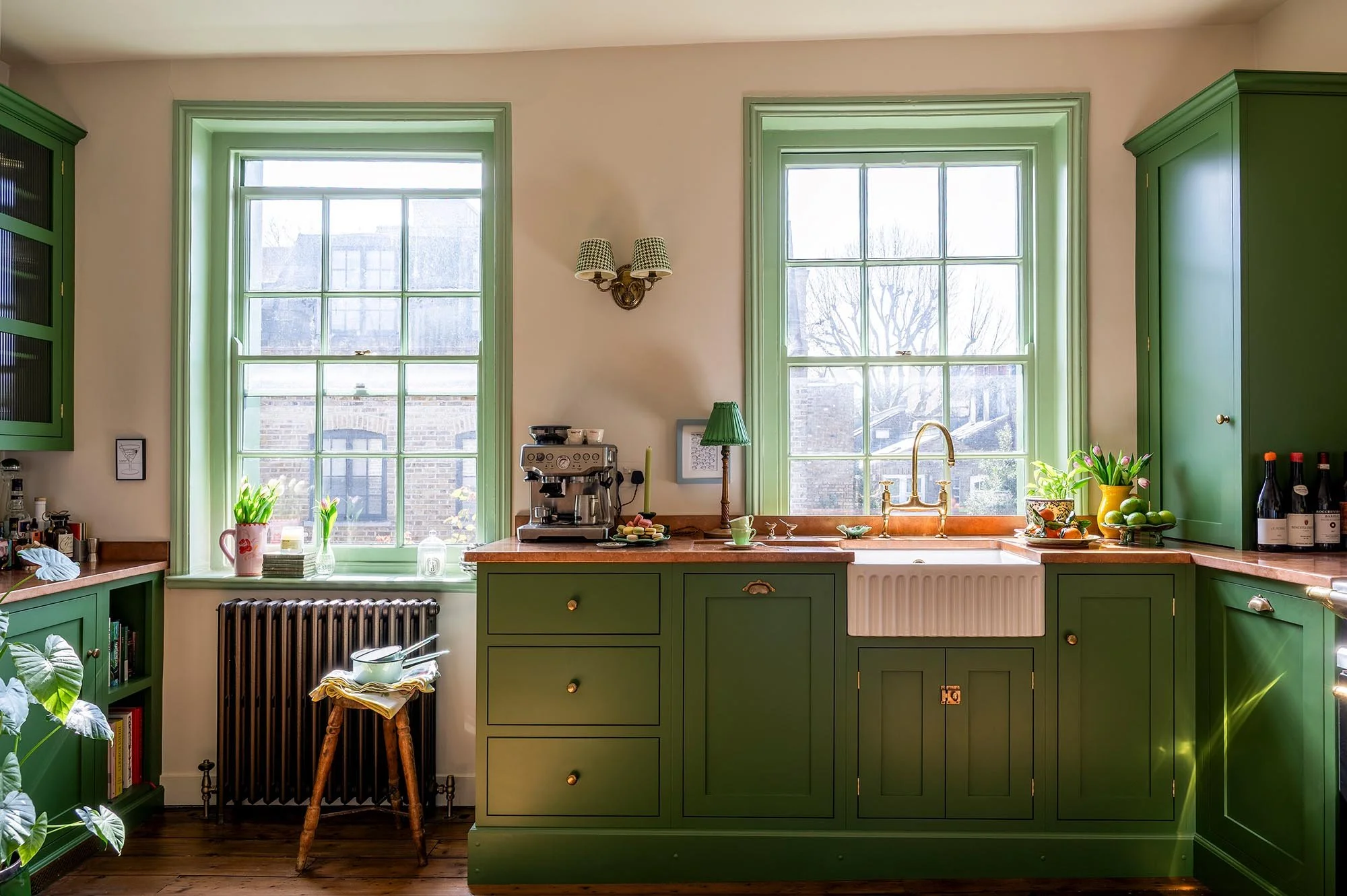Enhance Your Culinary Space: The Luxurious Kitchen
Image credit: deVOL
As I move forward with my planning for my own kitchen renovation, I’ve been paying a lot of attention to kitchen design and the specific details and additions that create the look of a high-end, luxurious kitchen. I want my kitchen to have an exquisite aesthetic appeal, but at the same time, the space needs to be functional as a hard-working family kitchen and a daily hub of activity.
Image credit: Higham Furniture
What Makes a Kitchen Luxurious?
After pinning multiple images of beautiful kitchens on Pinterest and Instagram, I've noticed a few common elements when it comes to designing a luxurious-looking kitchen. Natural materials (such as marble countertops and the inclusion of stained wood) are essential characteristics, along with a considered layout, custom cabinetry (think cupboard hats and curved edges), a timeless colour palette, state-of-the-art appliances and seamless technological integrations.
The Foundations of Luxury Design
The perfect luxury kitchen is a stylish balance of elegance and practicality, meeting culinary requirements alongside having a strong aesthetic appeal. Here are just a few of the key elements that I have noticed contribute to a beautiful (yet functional) luxury kitchen:
Premium Materials
There’s no denying that what distinguishes a luxury kitchen from others is the use of high-quality materials: natural stone worktops over laminate, metal over plastic and solid wood cabinetry over MDF. If you want to easily elevate the look of your existing kitchen to something more luxurious, try making small changes. You can replace low-quality hardware for cabinet handles and pulls with real brass details, or make any clear glass cabinet fronts look more designer by applying reeded clear acrylic. Try styling your kitchen with large oak chopping boards and marble cookware to bring in the warmth and refinement of natural materials.
Image Credit: Claire Garner
High-End Appliances
A modern kitchen that embodies luxury will often be equipped with high-end appliances. An intelligent refrigerator has the ability to alert you to the milk expiration date, while an intelligent oven guarantees that every dish comes out perfect every time. As important components in the success of a modern kitchen, invest in top brands such as Sub-Zero, Wolf or Miele, which have earned rave reviews for both performance and design. Additionally, incorporating appliances like the Easy rinse design H200 can enhance your kitchen's functionality and ease of maintenance
Rather than having your smart appliances on display, make sure that they are integrated for a seamless look that doesn’t disrupt the sweeping design of your kitchen cabinetry.
Functional Layout
A kitchen with a poor layout that does not flow, with few organisational, storage or preparation areas, will lead to a cluttered space that is cramped and inconvenient. When designing a kitchen, make sure that there is enough room to walk between the island and your cabinets (at least 90cm). Place plate and cutlery storage near your dishwasher so that you can empty it and store items away easily without having to walk to the other side of the room. If space allows, incorporate walk-in pantries, double islands and zones dedicated to baking or coffee brewing tasks.
Image Credit: Olive & Barr
Creating Ambience with Lighting and Fixtures
Layered Lighting Design
Lighting is an integral part of successful kitchen design. Avoid a garish ceiling full of spotlights and build up your lighting via wall lights, statement pendants over an island, and even freestanding corner lamps. The right lighting should include functional ceiling lighting, decorative lighting and atmospheric lighting. For pantries and large cabinets, install lighting that is run off a sensor for practicality and energy efficiency.
Luxe Fixtures and Hardware
Hardware can make or break a kitchen. High-end, bespoke cabinetry can be ruined by applying lightweight, poor-quality hardware. Look to install drawer pulls, cabinet knobs and door handles made from real brass with an elegant, modern design. Some of my favourite hardware suppliers include Corston Architectural Detail, Matilda Goad and Armac Martin.
Image Credit: Naked Kitchens
Feature-rich faucets (such as touchless operation and boiling water taps with water filtration systems) add convenience. A pot filler over your hobs will make filling large saucepans easy. You can also add in fizzy water taps or extractor fans that are integrated within the workspace.
Customisation
Personalisation is at the heart of luxury. Consider opting out of mass-market solutions for something more bespoke. Custom cabinetry with ‘hats’ and curved detailing, unique freestanding islands and personalised storage solutions can create a tailored kitchen. Some of the most successful luxury kitchen designs include thrifted furniture: old apothecary cabinets turned into islands and vintage wall cabinets hung in place of matching base units.
Image Credit: Catto & Co / Photographer: Peas In my Pod
For something more modern, consider a wine fridge, a built-in espresso machine for your morning caffeine ritual, or hidden charging stations for your gadgets to make your kitchen feel like it was designed just for you.
The Role of Smart Technology
A luxury kitchen would not be complete without the integration of smart technology (such as Wi-Fi-enabled appliances or voice-controlled features) to improve convenience. Starting your oven remotely from your smartphone or having a voice assistant set the perfect cooking playlist while you prepare dinner is the height of kitchen luxury, as this Smart technology adds a modern sophistication.
Maintaining Your Lux Kitchen
Luxurious kitchens require special care in order to retain their elegance. Non-abrasive cleaners should be used on natural stone countertops in order to preserve both their beauty and durability, while metal fixtures should be polished regularly to prevent them from tarnishing. Appliances should be serviced every year to improve performance.
The Final Touches
If your kitchen hasn’t been styled, it can feel empty. Those finishing touches create a lived-in, curated feel. Add plants for organic greenery - a large fiddle-leaf fig in the corner if you have the space, or a small row of potted herbs can make all the difference. Include sophisticated ceramics and artwork on open shelving, while bowls of single fruit (such as juicy red apples or citrus fruit) add colour and decoration to vast surface areas.
Image credit: deVOL










This London kitchen is as masterpiece in timeless, traditional kitchen design…